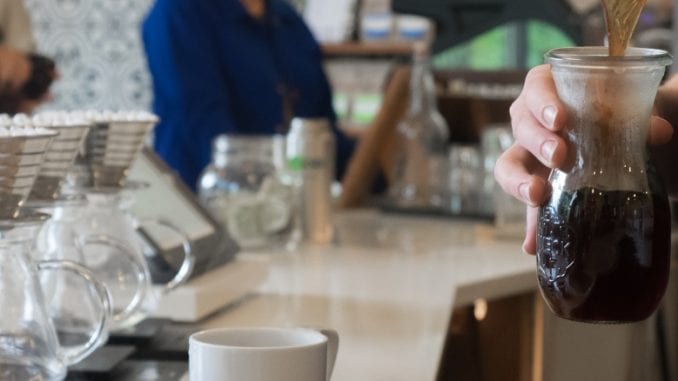
Olympia Coffee Roasting Company co-founder Sam Schroeder and director of sales Honor Forte discuss the evolution of manual brewing and Olympia Coffee’s decision to move toward automation.
BY CHRIS RYAN
BARISTA MAGAZINE ONLINE
Photos by Honor Forte
The latest issue of Barista Magazine includes the article “The New Slow Bar,” which discusses the evolution of manual brewing in specialty coffeehouses. Manual brewing’s resurgence in the late 2000s led to widespread adoption of many methods—from pourover to AeroPress to Clever—followed by a more nuanced relationship that many shops formed with manual brewing. Due to the potentially lengthy brewing process and erratic results of manual brewing, some shops sought to go a different route. One option was abandoning manual brewing altogether, with many cafés opting for the speed and consistency of batch brewing. Others stuck with manual brewing—preferring its no-waste, fresh-brewed approach—but explored methods for optimizing the brewing experience.
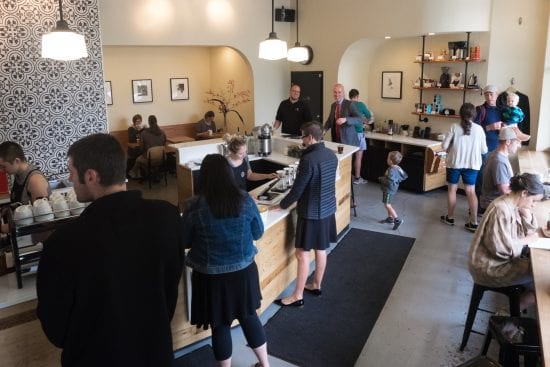
The latter path is the one Olympia Coffee Roasting Company in Washington chose. While the roaster-retailer serves pourover coffee at its three locations in Olympia, its flagship store in the state capital’s downtown district features a fairly recent piece of technology aimed at improving the pourover experience. Called the Poursteady, the machine is equipped with an under-counter Marco boiler and is programmable to execute various recipes with its water-dispensing wand.
Olympia Coffee sees this ramped-up take on the pourover as an important part of its future: When the company opens its fourth location in Tacoma, Wash., later this year, the Poursteady will be prominently featured. We asked Sam Schroeder, Olympia’s co-owner, and Honor Forte, its director of sales, for more on how they pursued automation in their manual-brewing methods.
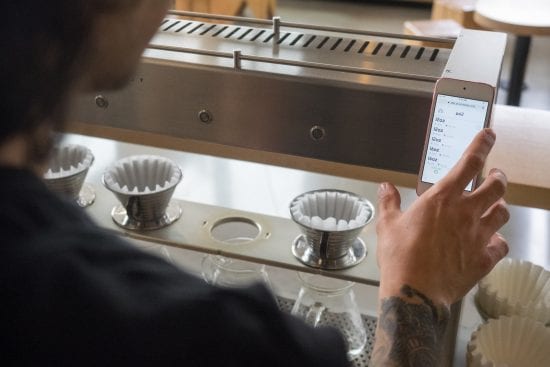
Chris Ryan: What were some of the reasons you decided to offer manual brewing in the first place at Olympia Coffee?
Sam Schroeder: The overarching reasons were the quality and the experience we could offer our guests. At the time we were located on a side street without great curb appeal—you kind of had to know about us, or hear about us through word of mouth to venture in. All of this is to say our shop wasn’t super busy early on. As a business owner you are compelled to see this as an advantage—if you have extra time to create an experience for a guest and your guests are going out of their way to visit your shop, it is almost the perfect conditions for handmade pourover coffee. However, this kind of attention paid made us busier and we eventually had to expand our original shop.
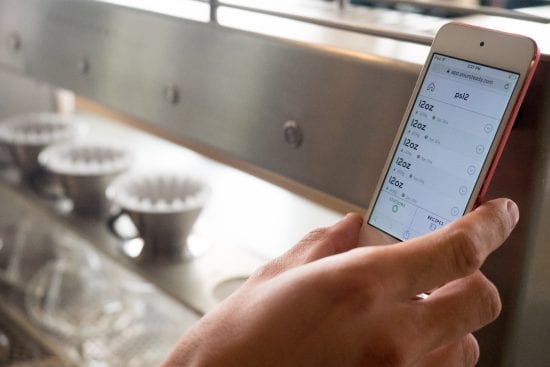
CR: What was it about your manual-brewing experience at Olympia Coffee that you felt could be improved?
Honor Forte: We started with the concept that we wanted to serve perfect coffee, and that revolved around ultra-intentional and focused manual brewing. That idea engages new people in the café, but as it brought more customers in, the process became more prone to mistakes and loaded up the barista with the kind of work and stress that contributed to customers being held up.
A barista starting down at four pourover scales at once doesn’t communicate the background information of the coffee, the brew method, the company, or the café all that well, and one mistake turned a four-minute brew into an eight-to-10-minute wait for customers. … It was a lot to do, and the shortcomings could be felt in the café the busier we got downtown for sure.
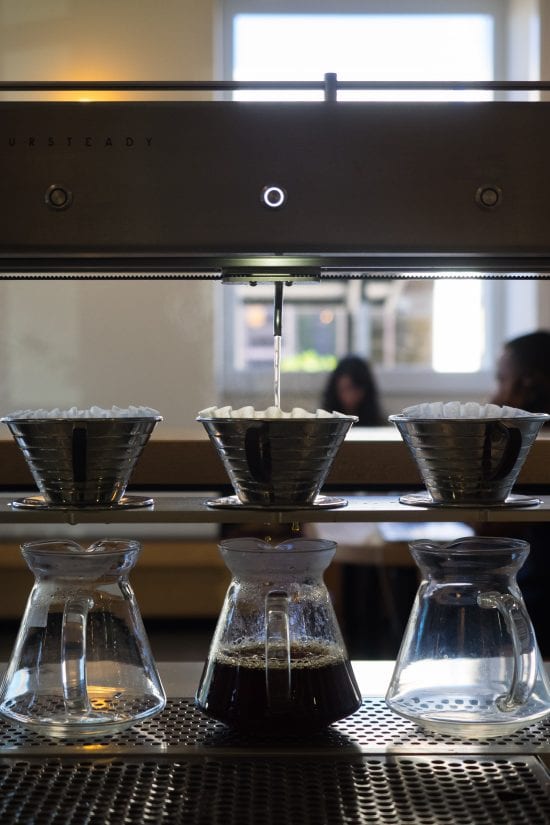
CR: What were you looking for with automation then?
HF: The switch to automated pourover was us looking to replicate the exact specs we pour by hand, but without mistakes, and put the focus back on the core ideas—engaging customers with why we do things, the coffee’s details, and the Olympia mission statement of improving the quality of life for farmers, staff, and customers. Especially since there are six or seven coffee roasting companies in Olympia—a town of only 60,000 people—we want to be able to communicate what we do differently amidst all the options.
CR: What have you found to be the biggest advantages of the automation?
SS: Ultimately it is speed; we have done everything possible to create an efficient and consistent by-the-cup service. But that’s not to discount that it just looks cool—theater and customer experience go hand in hand. There is a reason that our space has a glass wall that showcases our roasters and not a glass wall that showcases our back room—the former adds value to the customer experience.
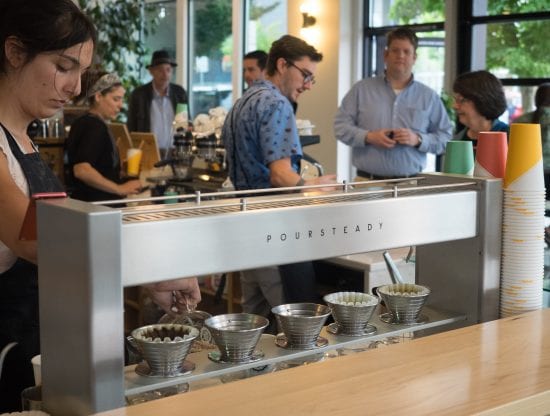
BM: Finally, you’ve stuck with manual brewing while others have moved away from it. Why?
SS: I am a huge believer in the value that a by-the-cup program can provide to your customers, whether manual or automated. I am also not dogmatic about it; we have three stores with three different strategies to present amazing filter coffee to our customers. Ultimately, you have to look at how presenting coffees one way or another will add value to the customer base you have and the one you want to build.


